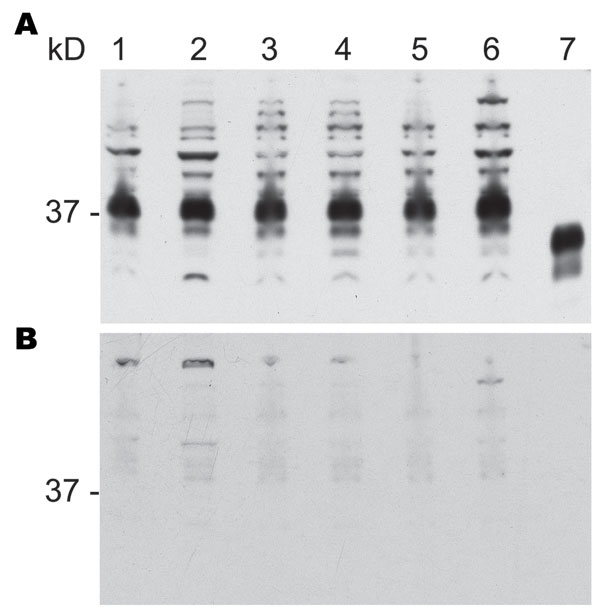Volume 15, Number 2—February 2009
Research
Characteristics of 263K Scrapie Agent in Multiple Hamster Species
Figure 4

Figure 4. Proteinase K–sensitive prion protein (PrPsen) Western blot analysis from 6 hamster species performed with A) polyclonal antibody R30 (89–103) or B) R30 preincubated with peptide to prion protein 89–103. Hamster species: lane 1, Syrian; lane 2, Turkish; lane 3, Djungarian; lane 4, Syrian; lane 5, Chinese; lane 6, Armenian. Lane 7, proteinase K–resistant prion protein (PrPres) from 263K Syrian hamsters. 0.8 mg tissue equivalents per lane; 37 kDa indicated.
Page created: December 08, 2010
Page updated: December 08, 2010
Page reviewed: December 08, 2010
The conclusions, findings, and opinions expressed by authors contributing to this journal do not necessarily reflect the official position of the U.S. Department of Health and Human Services, the Public Health Service, the Centers for Disease Control and Prevention, or the authors' affiliated institutions. Use of trade names is for identification only and does not imply endorsement by any of the groups named above.